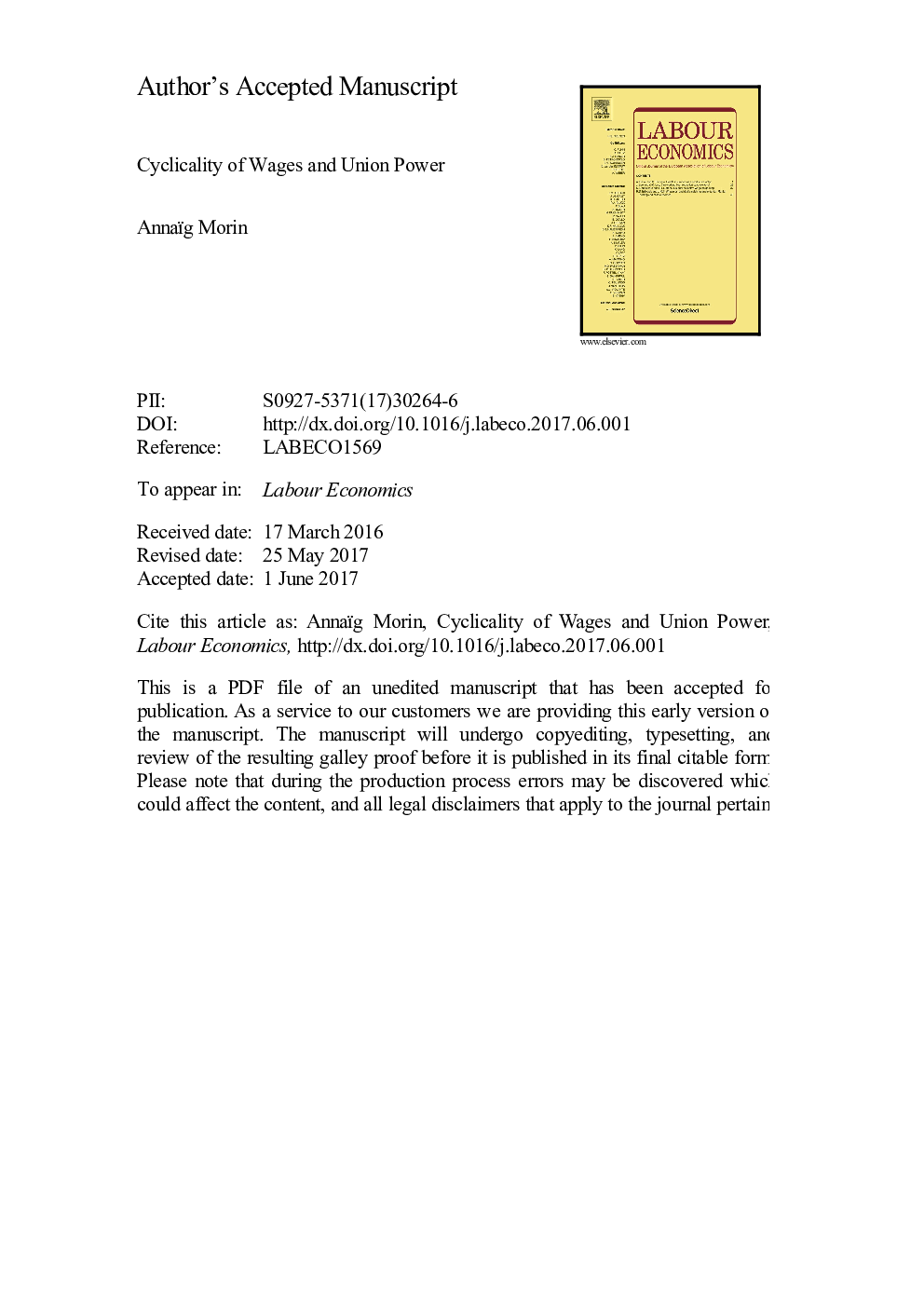| Article ID | Journal | Published Year | Pages | File Type |
|---|---|---|---|---|
| 5102037 | Labour Economics | 2017 | 51 Pages |
Abstract
This paper examines how trade unions shape the volatility of wages over the business cycle. I present a dynamic stochastic model of the labor market that integrates two main features: search frictions and trade unions. Because of search frictions, each job match yields an economic surplus that is shared between the worker and the firm. Therefore, I can decompose the volatility of wages into two components: the volatility of the match surplus and the volatility of the worker share of the surplus. Starting from the unions' objective function, I show that under collective wage bargaining, the worker share is endogenous and counter-cyclical. Consequently, when the economy is hit by a shock, the dynamics of the worker share partially counteract the dynamics of the match surplus, and this mechanism delivers endogenous wage rigidity. The model thus offers new insights into two business cycle features: the union wage premium fluctuates counter-cyclically, and employment is more cyclical but less persistent when wages are collectively bargained.
Related Topics
Social Sciences and Humanities
Economics, Econometrics and Finance
Economics and Econometrics
Authors
Annaïg Morin,
